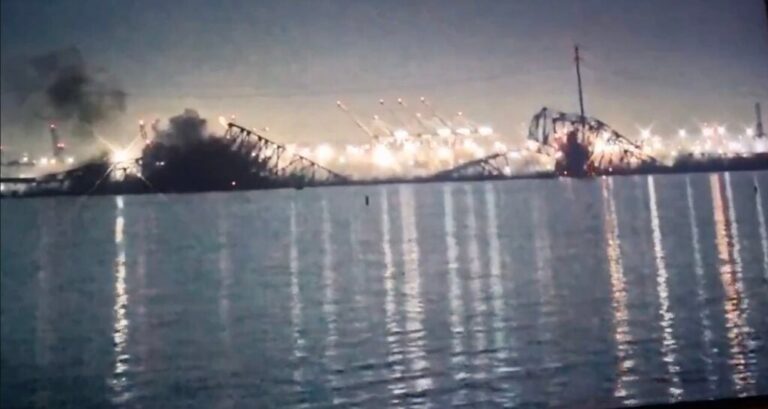The bridge, spanning 1.6 miles, fell in a couple of seconds. The disastrous effects are expected to take weeks to manifest.
The container ship Dali collided with and pulled down Baltimore’s Francis Scott Key Bridge early on Tuesday, threatening up to 2.5 million tons of coal, hundreds of Ford Motor Company and General Motors Co. automobiles, lumber, and gypsum.
The aftermath of the bridge collapse highlights the vulnerability of global supply networks, which are already under stress because to the Panamanian drought and missile assaults on Red Sea shipping by Houthi insurgents based in Yemen. One of the busiest ports on the US East Coast, Baltimore, is losing traffic, threatening to overwhelm docks in Virginia and New Jersey.
According to S&P Global Market Intelligence, Baltimore handled just 3% of all imports from the East and Gulf Coasts for the year that ended on January 31. However, with European automakers like Mercedes-Benz Group AG, Volkswagen AG, and BMW maintaining operations in and around the port, it’s vital for cars and light trucks.
Additionally, it is the second-biggest facility for US coal exports; a shutdown might affect shipments to India.
According to IHS Markit and Wood Mackenzie’s Genscape, about a dozen large vessels and an equal number of tug boats are stranded inside Baltimore’s harbor. Cargo ships, vehicle transporters, and the Palanca Rio tanker are among the vessels on the list.
That is the sole effect on the port.
Every day, some 35,000 people crossed the bridge. The American Trucking Associations estimate that the value of commodities that are transferred each year is around $28 billion.
Constructed over five years, the Francis Scott Key Bridge bears the name of the man who authored the Star-Spangled Banner. It was finished in 1977. One estimate at the time put the price at approximately $141 million. According to Freemark, a rebuild today would probably cost “several billion dollars.”
However, Baltimore will require extensive repair. Before any port operations start up again, officials must clear the 984-foot Dali and bridge debris from the river, which could take several weeks.
In order to avoid traffic jams from Boston to Miami, that is anticipated to expedite the movement of freight to the US West Coast. According to Ryan Petersen, the founder and CEO of Flexport Inc., a digital freight platform based in San Francisco, a sudden 10% to 20% spike in throughput via a port is enough to create huge backlogs and congestion.
Trade Center
Following the closure of its steel sector, Baltimore saw a revival as a hub for logistics and e-commerce, mostly due to the bridge connecting its major regions. Because of the city’s shortline railway, deep-water port, and strategically placed interstate highway, investors have been pouring money into its reconstruction.
Several of the biggest companies in the world, such as FedEx Corp. and Amazon.com Inc., have leased millions of square feet of warehouse space from one of the largest projects, Tradepoint Atlantic.
Both Maryland and Baltimore proclaimed states of emergency in the face of months of uncertainty.
g for victims in the water.
